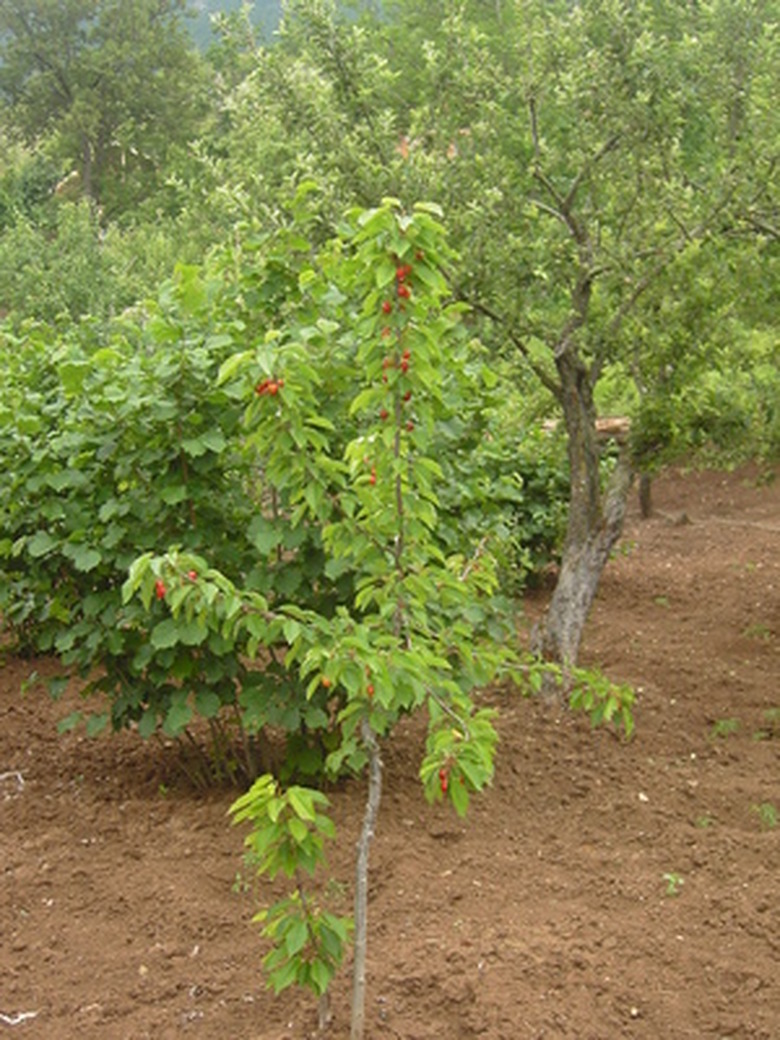How To Prop Up Fruit Trees
Things Needed
- Measuring tape
- Trowel
- Stake, 10-feet high
- Rope
- Scissors
Staking helps a young fruit tree adapt to its growing environment and promotes a straighter, more productive fruit tree, notes the University of Maine. Stake a tree just after planting. Use one stake to the side of each tree. Dwarf fruit trees should be permanently staked to support the tree, while standard-sized trees only need staking during the first couple of years. After that time, remove the stake; the mature tree should be able to withstand high winds.
Step 1
Measure 6 to 12 inches out from the tree trunk. This is the optimal planting distance for a stake, since it won't interfere with the roots of your young fruit tree.
- Staking helps a young fruit tree adapt to its growing environment and promotes a straighter, more productive fruit tree, notes the University of Maine.
- After that time, remove the stake; the mature tree should be able to withstand high winds.
Step 2
Dig a hole 2 feet deep with a small spade on the side of the tree that's weaker–whichever side the tree leans away from or is blown by wind.
Step 3
Set your stake in the prepared hole and cover in the hole with soil to securely plant your stake. To properly support the tree, the stake needs a firm planting, not a shallow one. North Carolina State University advises using wooden stakes 3 inches in diameter or metal conduit 1 inch in diameter, with 8 feet planted above ground and 2 feet of the stake planted below ground.
Step 4
Determine the best position on the tree's trunk to tie the stake. Grasp the trunk with one hand and shake it. Toward the bottom of the trunk the tree will be stiff and won't want to move. Move your hand up and shake the trunk again; continue doing this as you move up the trunk to see how flexible each part is. Home Orchard Society recommends staking the trunk 6 inches above the part of the tree trunk that flexes the most when you shake it.
- Dig a hole 2 feet deep with a small spade on the side of the tree that's weaker–whichever side the tree leans away from or is blown by wind.
- Home Orchard Society recommends staking the trunk 6 inches above the part of the tree trunk that flexes the most when you shake it.
Step 5
Tie one end of a rope to the stake. Wind the rope around the tree trunk in a figure eight so that the rope goes around the trunk of the tree and crosses over itself. Tie the other end of the rope to the stake. Cut the rope.
